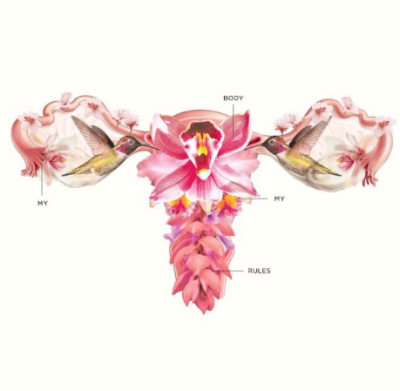On average a woman experiences 500 periods over the course of her lifetime. She spends a lot of her adult years trying not to get pregnant. Many women have no idea how their menstrual cycles or hormones work. Many are usure and how they maintain and respecting their monthly cycles actually relates to fertility. We grow up with a fear, to avoid pregnancy at all costs. As young women, we are led to believe that if we just look at a penis, we’ll get pregnant!

Often, in a perverse twist of fate, when many women actually want to have a baby. Many find that it’s not that easy to fall pregnant after all.
There are many underlying reasons why a woman may be wanting to take the time to improve her fertility. The ultimate goal is likely to be a successful pregnancy at some point. When trying to conceive (TTC), especially if she is experiencing difficulties in falling pregnant, a woman may feel many things. The initial excitement and hope can fall away after an extended period of trying. This can lead to feelings of loss, confusion, stress or a lack of self-belief and control. These are all natural reactions when facing difficulties with conception, or issues with fertility, whether unexplained or a diagnosed reason.
With a positive plan of action, support and knowledge, these negative feelings can be turned around. The journey towards building a family can feel a lot less daunting.
How I can help, support – Fertility Yoga
- Cycle awareness training and support- understanding your own cycle and how to work with it
- Hormone balance,diet advice based on Ayurvedic principles
- Yoga can help a woman find peace, equilibrium during this time. It forms an important part of her strategy to try and achieve a her dream.
- We know that yoga has a hugely beneficial effect on the both the body and mind. It can also help in regulating hormones, changing the energetic flow and calming the nervous system. The yoga systems of breath awareness, deep relaxation, visualizations and meditations; can provide you with effective ways to process the sometimes overwhelming shifts of mood, attitude and perceptions.
The Benefits of Fertility Yoga
In a yoga class is a place to feel safe without judgement. A place to get comfortable with your emotions such as grief, loss, frustration and disappointment.
I hold the space for you to allow or you to feel and process your emotions. I deliver a yoga practice, that will be helpful throughout the different stages of your fertility journey.
Important note: Yoga helps women navigate their fertility journey as part of a multipronged approach, I never indicate or say to a woman that doing yoga will guarantee a pregnancy.
Difficulties falling pregnant
If you are having difficulty in falling pregnant. It is very important initially to work out why you are not getting pregnant. It is vital that your body, hormones, cycle, fertile signs, and test results are understood. When you are aware why you are not getting pregnant. Then you can be clear on what steps can be taken to individually support you on your fertility story. There are a myriad of reasons why a woman may be having trouble in conceiving. But understanding your own cycle, and, if working toward a regular cycle is an ideal starting point for spontaneous conception.
How Yoga can help
Yoga can help us recreate that mind-body connection that may have become disconnected during a woman’s life and more specifically during the challenges of TTC.
Yoga can help a woman become more in touch with her body. This will ultimately help when connecting with and tracking her cycle. It will then preparing her body for pregnancy and regaining some control over her situation.

Increasing physical health, is another important factor when TTC. Eating the right foods, exercising sensibly and maintaining a healthy weight, avoiding toxins in food, plastics, cosmetics and cleaning products, all help regulate a woman’s menstrual cycle and assist in the creation of healthy eggs and conception.
Thoughts and attitude can also play a huge part in the TTC journey. Trying to get pregnant can be emotionally and mentally draining. Each month a woman gets her period, she may have to deal with disappointment, frustration and sadness. The mind is very powerful. Yoga can help manage the thoughts and emotions that can arise in the mind, when trying to maintain motivation when trying to get pregnant.
It’s also very easy for relationships to suffer when trying for a baby. It can feel like everywhere there are constant announcements of baby bumps and on social media and a woman may feel she is the only one in the world not able to get pregnant. It can make her feel alone and isolated and unable to reach out and feel understood. Yoga, can help create a kinder relationship with herself, and more able to communicate in turn within the relationships around her. Connecting with friends, partners and support groups to create more joy and understanding, thus helping to relax, produce beneficial endorphins, and help regulate the whole hormonal cycle. Connecting with others who are on similar journeys is a valuable resource that shouldn’t be underestimated.
What if a woman cannot/does not want to/ is not trying to get pregnant?
Although Fertility yoga is of a great benefit to women who are trying to get pregnant or facing issues with their own fertile status, This style of a feminine based yoga practice can be of benefit to all women, even if they are not trying to conceive.
Fertility yoga is about working with our natural cyclic nature, and with our menstrual cycles, not against our bodies. When we work this way, we discover that yoga can support us in achieving optimum health and vitality. compared to men, Woman, experience so many more hormonal fluctuations every month and throughout our life cycles, which affect our moods, our bodies, our energy and our sleep.
Adapting your yoga practice or exercise regime to work with your menstrual cycle is fully supported by science, but not yet common in our approach to our fertility
Traditional yoga classes are often very ‘yang’ and can increase the stress placed on the female body, especially when TTC.
Much of the mainstream yoga practised these days is angular, directional, and linear, reflecting the masculine principle of its origin. Women naturally move their bodies in a more fluid, sensuous way, reflecting their physical curves and their cyclical nature and a feminine yoga practice may look, and feel, different from the traditional masculine approach to asanas.

